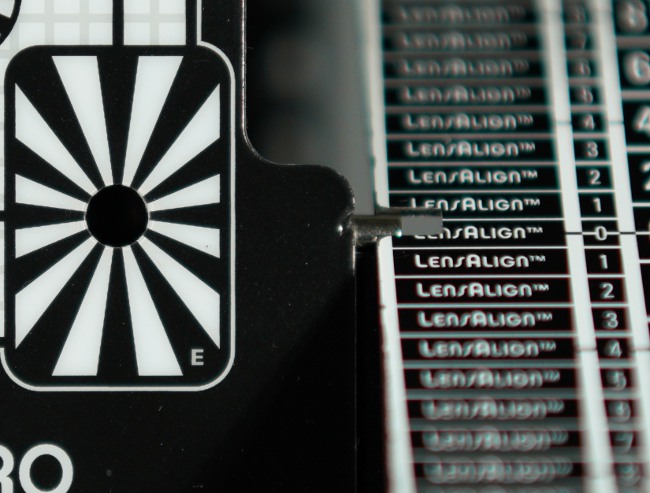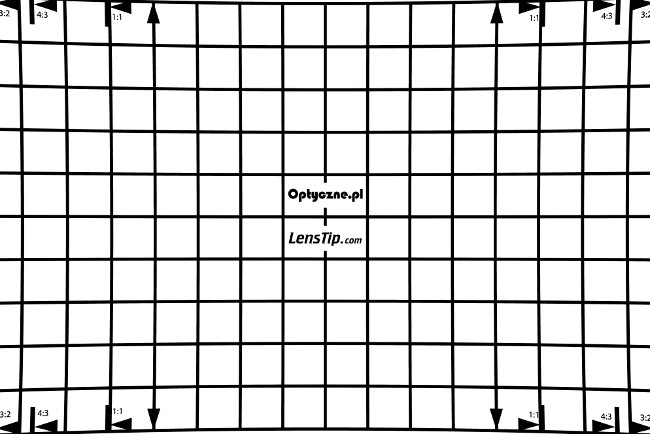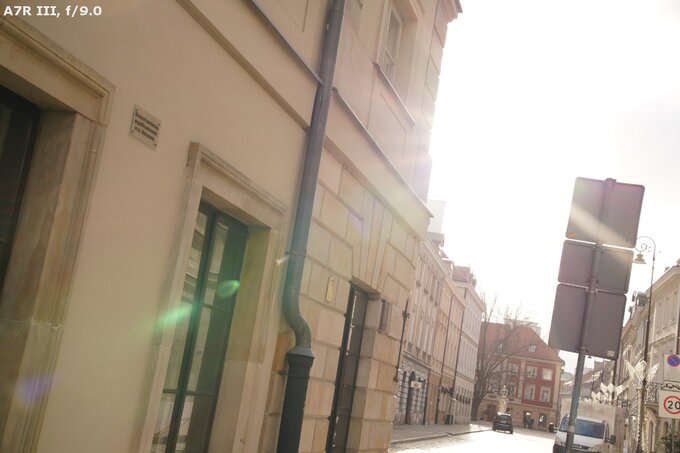Sigma A 50 mm f/1.4 DG DN – first impressions and sample shots
3. Several words about optical properties and autofocus
Image quality
Unfortunately, once again we have to test the new Sigma model during the winter, with truly horrible weather in Poland, making it virtually impossible to take good quality photos in nice, sunny conditions. Still, even cloudy sky allows us to say that the lens is sharp and fully useful up from its maximum relative aperture. Is it really better than its reflex camera predecessor, as the producers claim? We can't say for sure – untill we test properly the final specimen of the lens. We hope we won't wait long for that.Chromatic aberration
There is just one low dispersion glass element in the optical construction of the Sigma A 50 mm f/1.4 DG DN but it seems it's quite enough. Lateral chromatic aberration didn't bother us at all and the longitudinal variant, often problematic in case of such fast instruments, also seems to be kept in check – and the photo below is the proof.
| A7R III, JPEG, f/1.4 |
 |
Distortion
Classic 50 mm devices experienced some problems with distortion in times when they were constructed as double gauss lenses, with, typically, from 5 to 7 elements inside. Deformations in some models could reach even 2%.
Fortunately problems with noticeable distortion are over since more advanced optical systems have been used. The reflex camera Sigma A 50 mm f/1.4 DG HSM is an example to follow – it is able to reduce distortion level to practically zero even on full frame.
Please Support UsIf you enjoy our reviews and articles, and you want us to continue our work please, support our website by donating through PayPal. The funds are going to be used for paying our editorial team, renting servers, and equipping our testing studio; only that way we will be able to continue providing you interesting content for free. |
- - - - - - - - - - - - - - - - - - - - - - - - - - - - - - - - - - - - - - - - - - - - - - - -
Taking it into account it would be difficult not to feel disappointed by the performance of the new model in this category. Even though it boasts a more complex optical system (with one element and as many as three groups of elements more) its distortion amounts to +2.5% so definitely higher than the level of old, optically simpler gauss devices. A bit embarrassing, isn't it?
| A7R III, JPEG, 50 mm, f/1.4 |
 |
Vignetting
We don't have good news in this category either. While the reflex camera model had quite good results here, losing 43% (-1.64 EV) of light in the frame corners at the maximum relative aperture, the vignetting of the Sigma A 50 mm f/1.4 DG DN is noticeably higher, reaching by f/1.4 about 67% (−3.2 EV), and dropping by f/2.0 to near 50% (−2.0 EV).
| A7R III, FF, f/1.4 | A7R III, FF, f/2.0 |

|

|
Ghosting and flares
We have to wait for more stable weather conditions to test the new Sigma thoroughly. The photo below was taken during few sunny moments and we do admit it's not enough for any biding conclusions. Still you should rememer that the new model has it definitely more difficult in this category as it features as many as 11 groups of elements, 22 air-to-glass surfaces. Its predecessor has just 8 groups so only 16 surfaces. |
Autofocus
The producers boast of a linear autofocus motor called HLA (High-response Linear Actuator) that is supposed to ensure an exceptionally efficient and fast performance of the focusing mechanism.We attached the tested Sigma first to the Sony A7R III. In this case its work was really noiseless but the speed varied, with focusing time changing from 0.5 of a second to even over 1 second. Sometimes the lens slowed down and wavered, sometimes the focusing mechanism found the focus without any hesitation.
In case of the lastest Sigma lenses we've seen some remarks that their autofocus performs better in the AF-C mode even if you take photos of stationary objects. When we set the lens into that mode the mechanism indeed behaved better but still we could notice some waverings.
Additionally, we decided to check how the Sigma would perform while attached to the newer body, the Sony A7R V. The performance was once again noiseless but also a bit more efficient. In the AF-S mode running through the whole distance range and confirming the focus took 0.5-0.7 of a second, with less focus play and wavering. What's interesting, the AF-C mode was able to change the new Sigma into a real space rocket – focusing was flash quick, taking just 0.3-0.4 of a second, without any hesitation of delays.
It's worth remembering that the autofocus module software is often a feature that can be significantly improved in the final version of a lens so we hope the final specimen of this Sigma lens will perform a bit better in this category.






